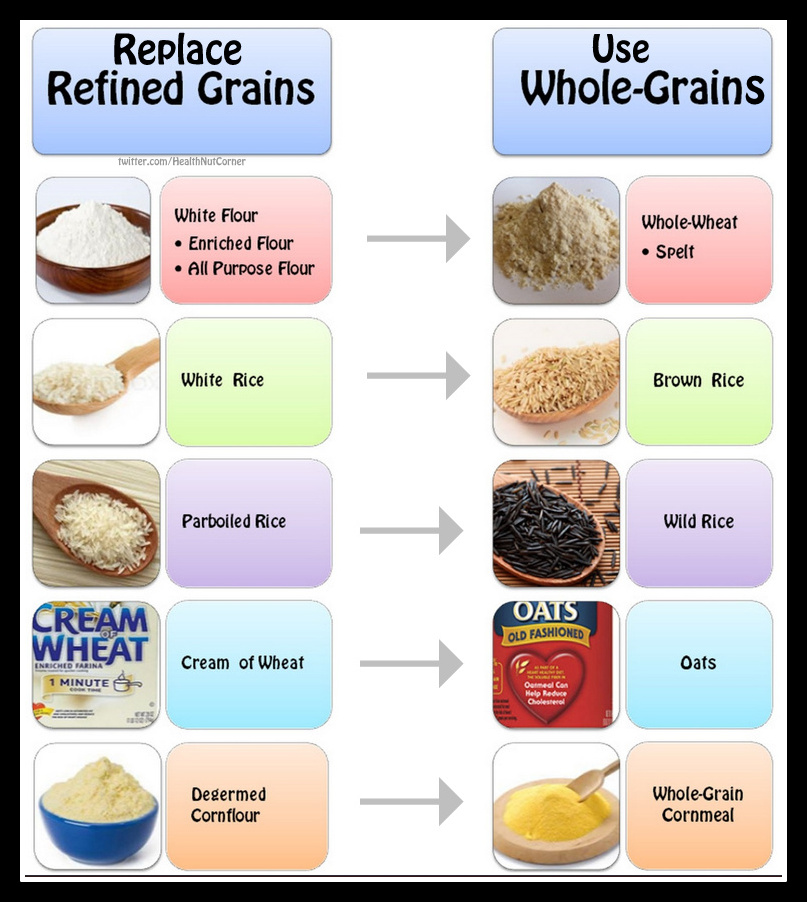Unlocking the Power of Whole Grain Cereals: Your Guide to a Healthier You
Are you looking for a simple yet powerful way to boost your health? Look no further than the humble whole grain cereal. Often overlooked, these nutritional powerhouses offer a wealth of benefits, from supporting heart health to aiding in weight management. This comprehensive guide dives deep into the world of whole grain cereals, providing you with the knowledge you need to make informed choices and reap the rewards of these dietary staples.
So, what exactly qualifies a cereal as "whole grain"? Unlike refined grains, which have been stripped of their bran and germ during processing, whole grains retain all three parts of the kernel: the bran, the germ, and the endosperm. This complete package delivers a rich source of fiber, vitamins, minerals, and antioxidants, contributing to a healthier and more vibrant you.
The history of whole grains traces back thousands of years to the earliest agricultural civilizations. From ancient grains like spelt and barley to modern varieties like oats and brown rice, these dietary staples have played a crucial role in human nutrition throughout history. However, the rise of processed foods in recent decades has led to a decline in whole grain consumption, contributing to a rise in various health issues.
One of the main issues surrounding whole grain cereals is the prevalence of misleading marketing tactics. Many breakfast cereals boast "whole grain" on their packaging, but often contain minimal amounts of actual whole grains and are loaded with added sugars and unhealthy fats. Learning to decipher food labels and identify truly whole grain options is crucial for maximizing the health benefits of these foods.
To navigate the world of whole grain cereals effectively, it's important to understand some key definitions. "Whole grain" refers to grains that retain all three parts of the kernel. "Refined grains" are those that have been processed, removing the bran and germ, which results in a loss of fiber and nutrients. "Enriched grains" have some nutrients added back after processing, but they still lack the full nutritional profile of whole grains.
Embracing whole grain cereals offers a multitude of health advantages. First, their high fiber content promotes digestive health, preventing constipation and supporting a healthy gut microbiome. Second, whole grains are rich in B vitamins, which are essential for energy production and cognitive function. Third, the antioxidants present in whole grains help protect cells from damage, reducing the risk of chronic diseases.
Creating an action plan for incorporating more whole grains into your diet is simple. Start by swapping refined grain cereals for whole grain options. Experiment with different varieties, like oatmeal, whole wheat flakes, or shredded wheat. Gradually increase your intake to allow your body to adjust. Look for whole grain breads, pastas, and brown rice to further boost your whole grain consumption.
To help you choose wisely, here are some tips and tricks: Check the ingredient list. The first ingredient should be a whole grain, such as "whole wheat" or "whole oats." Be wary of added sugars. Choose cereals with minimal added sugar or sweeten them naturally with fruit. Look for cereals with at least 3 grams of fiber per serving.
Advantages and Disadvantages of Whole Grain Cereals
| Advantages | Disadvantages |
|---|---|
| High in fiber | Can be more expensive than refined grains |
| Rich in vitamins and minerals | Some individuals may experience digestive discomfort initially |
| Supports heart health | May have a shorter shelf life |
Five best practices for implementing whole grain cereals into your diet: Choose 100% whole grain products, gradually increase intake, combine with protein and healthy fats, explore different varieties, and read food labels carefully.
Five real-world examples of whole grain cereals: Oatmeal, shredded wheat, whole grain flakes, puffed whole grains, and muesli.
Five challenges and solutions related to whole grain cereals: Cost: buy in bulk; Taste: experiment with different toppings; Availability: shop at health food stores; Preparation time: choose quick-cooking options; Digestive issues: gradually increase intake.
FAQs: Are all whole grains the same? No, they vary in nutrient content; Are whole grains gluten-free? Some are, some aren't; Can I eat whole grains if I have diabetes? Yes, they can help regulate blood sugar; Are whole grains good for weight loss? Yes, they promote satiety; Are whole grains expensive? Not necessarily, buy in bulk; How do I store whole grains? In an airtight container in a cool, dry place; Can I eat whole grains every day? Yes, it's recommended; How much whole grains should I eat? Aim for at least half of your grains to be whole grains.
In conclusion, embracing whole grain cereals is a simple yet profound step you can take towards a healthier and more vibrant life. From boosting heart health to aiding digestion and providing sustained energy, the benefits are undeniable. By understanding the key differences between whole grains and refined grains, learning to navigate food labels, and incorporating these nutritional powerhouses into your daily meals, you'll be well on your way to reaping the rewards of a whole grain-rich diet. Start today, and experience the transformative power of whole grain cereals for yourself. Make the switch, and nourish your body from the inside out. You deserve the sustained energy, improved digestion, and long-term health benefits that whole grain cereals can offer. So, take the first step towards a healthier you and explore the diverse world of whole grain cereals today!
Cheeky coffee greetings a whimsical exploration of german humor
Unlocking the secrets of heng tai house fu heng estate
Decoding sherwin williams balanced beige sw 7037 the ultimate neutral














